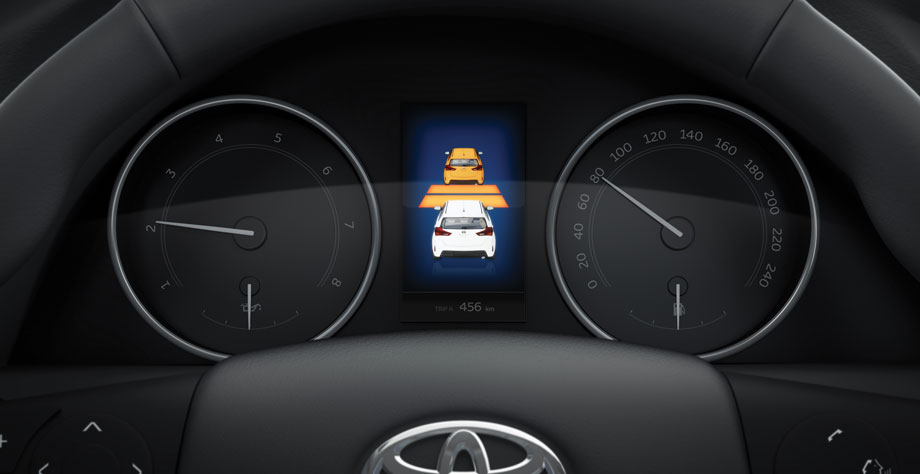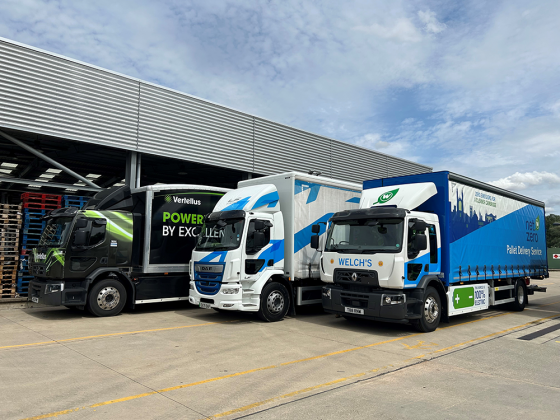Expert Panel: Telematics

Fleet management has become a more complex and demanding role. So how has telematics - and the wealth of data it creates - evolved to meet the changing needs of the profession? GreenFleet taps into the minds of its expert telematics panel to find the answers.
The role of the fleet manager has changed significantly over recent years. Duty of care responsibilities, tight budgets, lowering emissions, and evolving technology have made the role much more advanced, strategic and demanding, as well as being more fundamental to the company as a whole.
Telematics was a game-changer for fleet management. All of a sudden, managers had visibility over where their drivers were on the roads, as well as access to vehicle performance. This new data allowed them to make informed decisions about what changes to make for a more efficient, safer and cost effective fleet.
The technology then got smarter. It gave data on how drivers drive, diagnostics systems identified vehicle faults earlier, camera systems improved safety and security, and routing and scheduling systems streamlined logistics. Then smartphone and tablet apps came along, making fleet technology even more accessible.
Yon Copitch, managing director of Traffilog UK said: “Over the last ten years telematics has changed considerably. No longer is tracking and traditional driver profiling sufficient to satisfy fleet operators’ needs to reduce costs and manage their vehicles. Today it’s prerequisite for connected vehicles to offer full diagnostics, which allow operators to predict failure and reduce downtime, along with tachograph downloads, vehicle checking and communication.”
Duty of care
While the role of fleet management has evolved to become more complex, what still remains fundamental is the safety of drivers. The Corporate Manslaughter Act means that employers could be liable should their staff be killed in an accident whilst driving for work. And with DfT statistics stating that around a quarter of road crashes involve a vehicle being driven for work, it is a very real concern for company bosses. The Health and Safety Executive’s guidance on the matter states that: ‘If one of your employees is killed, for example while driving for work, and there is evidence that serious management failures resulted in a “gross breach of a relevant duty of care”, your company or organisation could be at risk of being prosecuted under the Corporate Manslaughter and Corporate Homicide Act 2007.’ Therefore companies must demonstrate that they are actively assessing the risks involved with driving for work, such as driver hours and journeys, and put in place a health and safety policy.
Better drivers
Creating better drivers is crucial to improving safety. Telematics systems send data back to head office on how staff are driving – whether they are speeding, or braking and cornering too harshly. Many systems give real-time feedback to drivers too so they can modify their driving style whilst on the road.
Data on driver performance allows managers to give the appropriate training to staff, and in some cases, provide incentive schemes that reward good driving. Whilst this access to information may have been seen as ‘big brother’ in the early days, it is now accepted as standard practice.
Nick Walker, managing director at RAC Telematics said: “The management of risk in the fleet as well as the need to improve driver behaviour has become increasingly important over the past few years. Fleet managers have a duty of care obligation towards their drivers, and are looking for cost savings from reduced accident rates, down time and maintenance costs through better driving styles. Telematics has developed to meet these growing needs and solutions now have extended beyond standard tracking functions to include driver behaviour monitoring and also crash detection and reporting.”
He continued: “Accidents happen, but fleet operators have an obligation to ensure that they have taken measures to train and monitor driver styles and to act where drivers are exposed to risk. Fleet operators also have a duty to watch out for accidents and ensure both the safety of the driver involved and the recovery of the vehicle.”
Data overload
With all this technology comes vast amounts of data which fleet managers have to understand and utilise in order to make changes – which can be a daunting task. Martin Kadhim, partnership director from Lightfoot, said: “All the data in the world doesn’t, in itself, address the one key area that organisations are desperate to fix – how do we get better, safer and more efficient drivers, without incurring a massive administrative and management burden.”
He continued: “Many fleet operators we speak to are disillusioned with the volume of data they receive and have to act on in order to remain compliant. Certainly, they want information that is useful to them in order to run their fleets effectively, but more pertinently, they want better, safer drivers. The alternative is having a technology that isn’t simply about delivering data, but more so works directly and constantly with the drivers, in vehicle, in real-time, all of the time, in order to change behaviours.”
Jack Palmer, senior project manager at TU-Automotive says it is the job of the telematics companies to process and feed back useful data back to its clients: “With so much information enabled by telematics, it is the job of fleet management companies and telematics service providers (TSPs) to filter the data fed back to fleets so actionable changes can be identified.”
Fuel and other savings
Fleet costs are the second biggest expense for an organisation after payroll, so any area where savings can be made is welcomed.
Safer driving comes hand-in-hand with more fuel efficient driving, which means companies will also benefit from less fuel costs – and lower emissions. What’s more, less accidents mean less repair costs and insurance claims.
Nick Walker speaks of RAC’s own experience in using telematics for their fleet. He says: “Improved driving behaviour reduces fuel usage (and cost), it reduces repair and maintenance costs, and it also reduces the frequency of accidents. In the RAC fleet alone, we have experienced a 25 per cent reduction in accidents year‑on‑year through driver behaviour monitoring. We have also saved money on fuel and insurance.”
Technology for better safety
Thankfully, vehicles themselves have got a lot safer. As well as standard safety features, many modern vehicles go the extra mile, including technology such as lane keeping systems, automatic braking and blind spot warnings. From April 2018, automatic emergency call, known as eCall, will be fitted as standard to every new car sold in the EU. This system allows new cars to detect how bad a crash is and automatically dial the emergency services – even connecting drivers with an operator if they’re trapped inside the car.
But until then, many telematics solutions are able to detect if the vehicle has been in an accident and notify the back office. What’s more, the tracking element of telematics means bosses know where their drivers are at any time.
Data as evidence
Having telematics in place that monitors driver style and journey types can help drive down insurance premiums as costs are worked out based on real performance data.
What’s more, dashboard cameras can provide video footage of any incidents, which can be used as evidence in legal cases. It is also becoming more and more common to contest speeding fines using telematics data as evidence.
Jack Palmer said: “Installing dash cams to monitor activity in and out of the vehicle has a clear ROI when working out liability in the event of the crash. To present footage of what really happened to insurers will be extremely valuable in settling claims payments. That’s an example of a change fleet operators can make today which will save them a lot of time and money further down the road.
“Likewise, the installation/usage of active safety features has been proven to reduce collisions, thus directly effecting uptime and maintenance costs.”
The mobility trend
The traditional way of looking at fleet management and transport in general is being challenged by a new concept of ‘mobility’ – taking in the whole picture of travel. As vehicles get more connected, and “plugged into the wider connected mobility ecosystem”, as Jack Palmer describes it, it is possible to think differently about travel.
Who is to say that you need a vehicle to get from A to B. This concept takes into consideration public transport, car sharing, car clubs, traffic, accommodation and parking.
Whilst fleet managers may see this trend as a challenge, they should use it as an opportunity for innovation and use the various telematics solutions that can facilitate such travel planning.
The future
As companies become more innovative in the way they do business, so too will their fleet function. And with technology constantly evolving, it will offer new ways for fleets to operate inventively and efficiently.
Yon Copitch explains: “In the UK the telematics industry is growing at a rapid pace. This will continue as companies with major investment in R&D continue to provide new and exciting technology, eventually becoming the central hub of the vehicle providing a bumper-to-bumper solution.”
Jack Palmer advises fleets to consider the changing technological landscape when procuring telematics: “It is very important for fleet operators to look two to three years ahead in what is coming from the tech space so that they can plan for what they can implement.”
And sharing his futuristic vision, he poses the question: “Who is to say that a drone could not complete the last mile of delivery for a logistics company?”
Yon Copitch:"The UK telematics industry is growing at a rapid pace, with Traffilog increasing its customer base by 80 per cent year on year. This will continue as companies continue to provide new and exciting technology, eventually becoming the central hub of the vehicle, providing a bumper to bumper solution. Already developing event cameras, CCTV, Wi-Fi and much more, operators choosing the right supplier will find the opportunities to reduce costs become greater."
Nick Walker: "Risk management is a science and as such there are ongoing refinements to improve accuracy. At RAC we believe we can achieve a greater than 95 per cent accuracy and also improve reporting to also include vehicle condition and weather patterns. Driver monitoring is also an area which will be improved over time by adding additional parameters or refining scores with experience. Dashboard cameras will become more important and will be integrated with driver behaviour, crash detection and other aspects of telematics technology."
Martin Kadhim:"A fleet manager recently compared using telematics to the experience of buying an item of flat-pack furniture: you want a wardrobe but in reality you end up with wood and screws. Telematics is largely the same – yes the data is important, but what fleets really want is better and safer drivers. This is what we are doing at Lightfoot and we’re getting a very positive reaction. We believe there is enormous potential for solutions that genuinely improve driver behaviour and reduce risk, while empowering drivers."
Jack Palmer: "As more devices become digitalised and the number of vehicles become connected to the internet, functions that are today unknown will present themselves. Who is to say that a drone could not complete the last mile of delivery for a logistics company? For the moment, the goal is connecting more vehicles and that’s where the real opportunity lies. Once we have a critical mass of connected vehicles, the real innovation starts."






